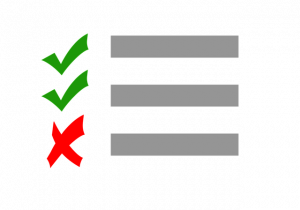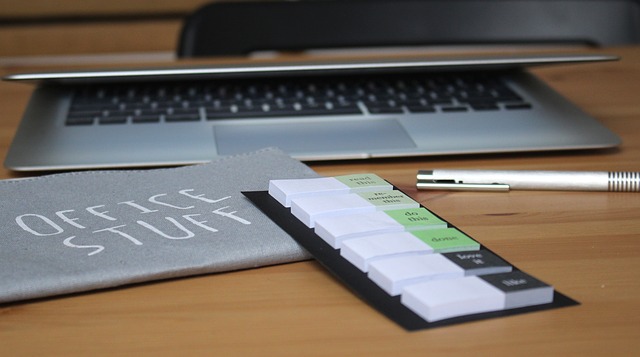
How to Record Equipment Purchases in Quickbooks
 If you’ve recently purchased equipment for your business, you might be wondering how to record it in Quickbooks. Assuming your business needs the equipment to perform its revenue-generating operations, you can write it off on your taxes. There’s no option specifically for “equipment” in Quickbooks, however, leaving many business owners to believe that it’s not possible to record such transactions. While Quickbooks doesn’t have an option for equipment, you can still record the transaction.
If you’ve recently purchased equipment for your business, you might be wondering how to record it in Quickbooks. Assuming your business needs the equipment to perform its revenue-generating operations, you can write it off on your taxes. There’s no option specifically for “equipment” in Quickbooks, however, leaving many business owners to believe that it’s not possible to record such transactions. While Quickbooks doesn’t have an option for equipment, you can still record the transaction.
Equipment Is a Fixed Asset
In Quickbooks, equipment is typically recorded as a fixed asset. Fixed assets, of course, are long-term resources that you don’t intend to consume or sell within the fiscal period in which you purchased it. As a result, most types of equipment are considered fixed assets. You may keep a piece of equipment for several years, all while using it to facilitate your business’s money-making activities. Because equipment is typically a fixed asset, that’s how you’ll need to record it in Quickbooks.
Steps to Recording Equipment Purchases in Quickbooks
You can record equipment purchases in Quickbooks by labeling them as fixed assets. After logging in to your Quickbooks account, click the gear icon on the home screen, followed by “Chart of Accounts” below your company’s name. Next, click “New” in the upper-right corner. You can then choose the option for “Fixed Asset” under the menu for account type.
Assuming you’ve followed these steps, you should now be able to enter the details about the equipment purchase, including the type and original cost. You’ll also be able to create a unique name for the fixed asseet account.
Keep in mind that Quickbooks supports depreciation tracking of fixed assets. If you click the box labeled “Track depreciation of this asset,” Quickbooks will add a subaccount for depreciation. Once created, you can track the equipment’s depreciation over time. Of course, depreciation tracking is optional, meaning you aren’t required to use it. Nonetheless, many business owners and accountants use this feature to track how much their equipment has depreciated in value.
After completing all the required fields, as well as setting up depreciation tracking, you can complete the process by clicking “Save and close.” Congratulations, you’ve just recorded the equipment purchase. You’ll now be able to view the transaction by looking at your business’s fixed asset purchases in Quickbooks.
Have anything else that you’d like to add? Let us know in the comments section below!

5 Tips on How to Go Paperless in Your Office
 How much paper do you typically use in your office? Research shows that office workers in the United States use an average of 10,000 sheets of paper annually. Some workers, of course, use far more paper. If your office is cluttered with paper, though, you should consider the following tips on how to go paperless. By making just a few small changes to your workspace and daily work activities, you can reduce or potentially even eliminate the need for paper.
How much paper do you typically use in your office? Research shows that office workers in the United States use an average of 10,000 sheets of paper annually. Some workers, of course, use far more paper. If your office is cluttered with paper, though, you should consider the following tips on how to go paperless. By making just a few small changes to your workspace and daily work activities, you can reduce or potentially even eliminate the need for paper.
#1) Take Notes on Your Smartphone
Many office workers create notes on printer paper or sticky notes. A better idea, however, is to use your smartphone for note-taking. Whether you own an Android- or Apple-powered smartphone, you can download a note-taking app. Note-taking apps live up to their namesake by allowing you to take notes on your smartphone.
#2) Use a Whiteboard
In addition to your smartphone, you can use a whiteboard to create notes and other temporary messages. A whiteboard, of course, is a dry-erase board that supports the creation of temporary messages. After writing a message on a whiteboard, you can erase it with a dry cloth.
#3) Scan Documents
To truly go paperless in your office, you’ll need to invest in a scanner. Using a scanner, you can create digital copies of paper documents. Rather than keeping large file cabinets full of paper documents, you can convert those documents into digital files. Known as digitizing, it’s become increasingly popular among office-based businesses.
#4) Use Credit or Debit Cards for Business Purchases
When purchasing products or services associated with your business’s operates, use either a credit or debit card. Why is this important? If you pay for a product or service using cash, you’ll only have a paper receipt. Using a credit or debit card, on the other hand, creates a digital trail. The vendor may still give you a receipt, but you’ll also be able to access your financial records digitally to view the transaction information.
#5) Recycle
You may not be able to eliminate all the paper in your office. Nonetheless, following these tips can help you go paperless by significantly reducing the amount of paper your office uses. And you can always recycle any remaining paper in your office — assuming you don’t need it. Even if it has ink on it, most types of printer paper is recyclable.
Have anything else that you’d like to share? Let us know in the comments section below!
Using Advanced Inventory in Quickbooks: What You Should Know
 To stay ahead of your competitors, you’ll need to track more than just the total number of sales your business generates. While tracking total sales is important, it’s equally important to track where, exactly, your business’s sales come from. Even if most of your business’s sales from its main store, others may come from your business’s smaller stores in other regions. Alternatively, your business may generate some of its sales online. Using Quickbooks’s Advanced Inventory, you’ll be able to easily track your business’s inventory across various stores or sales channels.
To stay ahead of your competitors, you’ll need to track more than just the total number of sales your business generates. While tracking total sales is important, it’s equally important to track where, exactly, your business’s sales come from. Even if most of your business’s sales from its main store, others may come from your business’s smaller stores in other regions. Alternatively, your business may generate some of its sales online. Using Quickbooks’s Advanced Inventory, you’ll be able to easily track your business’s inventory across various stores or sales channels.
What is Advanced Inventory?
Available in Quickbooks Desktop Enterprise, Advanced Inventory is a tracking feature that allows you to manage your business’s inventory across multiple locations. It doesn’t reveal how many sales your business generates at its various stores and channels. Rather, Advanced Inventory is used primarily to track product inventory across multiple locations.
Maybe your business sells its products at three different stores, or perhaps it has a half-dozen brick-and-mortar stores plus an online store. Regardless, you can use Advanced Inventory to determine how much inventory your business has at each of its active locations.
How to Enable Advanced Inventory
Assuming you have Quickbooks Desktop Enterprise, you can enable Advanced Inventory in just a few simple steps. Start by clicking the “Edit” menu and selecting “Preferences.” Under the left-hand menu, click “Items & Inventory,” followed by “Company Preferences.”
You should now see a box for “Inventory and Purchase Orders are Active.” If there’s currently no checkmark in it, click the box so that it adds a checkmark. When finished, click the box below this area labeled “Advanced Inventory Settings.” You can then save and close this page to complete the process.
Creating Inventory Sites
With Advanced Inventory enabled, you can begin to track your business’s inventory across multiple locations. First, however, you must create inventory sites. An inventory site is essentially a location where you’d like to track your business’s inventory.
You can create inventory sites in Quickbooks Desktop Enterprise by selecting the “Lists” menu and choosing “Inventory Site List.” On the next screen, choose “Site,” followed by “New.” You should see several fields where you can enter information about the site. Complete all the required fields, after which you can save and close this screen. Repeat this process for all your business’s locations, and you’re good to go!
Have anything else that you’d like to add? Let us know in the comments section below!

Gross Profit vs Gross Margin: What’s the Difference?
 The terms “gross profit” and “gross margin” are often used interchangeably to describe how much a business generates from its activities. Regardless of their size or market, businesses must purchase products and services to conduct their own money-money activities. A retail store, for instance, must purchase inventory from a vendor so that it can resell the products to its customers. While gross profit and gross margin offer insight into a business’s profits, they aren’t necessarily the same. So, what’s the difference between gross profit and gross margin in accounting?
The terms “gross profit” and “gross margin” are often used interchangeably to describe how much a business generates from its activities. Regardless of their size or market, businesses must purchase products and services to conduct their own money-money activities. A retail store, for instance, must purchase inventory from a vendor so that it can resell the products to its customers. While gross profit and gross margin offer insight into a business’s profits, they aren’t necessarily the same. So, what’s the difference between gross profit and gross margin in accounting?
Gross Profit Explained
Gross profit is an accounting metric that shows how much profit a business generates from its activities. It’s calculated by taking the business’s net sales and subtracting that number by its Cost of Goods Sold (COGS). If a business generated $200,000 during a given month and its COGS was $60,000, its gross profit would be $140,000 for that month. Gross profit uses a simple formula to reveal how much profit a business generated during a particular period.
Gross Margin Explained
Also known as gross profit margin, gross margin is another accounting metric that, like gross profit, shows much much profit a business generates from its activities. With that said, it uses a different formula than gross profit. Gross margin is calculated by taking the business’s gross profits and dividing that number by its net sales. Therefore, it uses a slightly different formula that ignores certain expenses.
Differences Between Gross Profit and Gross Margin
The main difference between gross profit and gross margin is that the former takes into account all of the business’s expenses, whereas the latter does not. With gross profit, all expenses associated with a business’s money-money activities are factored into the equation. With gross margin, indirect expenses — advertising, administrative fees, interest, tax, etc. — are ignored. These expenses are ignored when calculating gross margin, so a business’s gross margin is typically smaller than its gross profit for that same period.
You can use gross profit or gross margin to track your business’s financial health and well-being. Gross margin, however, ignores the aforementioned expenses, so it offers a more cloudy and altered representation of your business’s finances. That’s why, in fact, it’s referred to as “gross margin” rather than simply “gross profit.” Hopefully, this gives you a better understanding of how gross profit and gross margin differ.
Have anything else that you’d like to add? Let us know in the comments section below!

5 Accounting Tips for Independent Contractors
 Do you work as an independent contractor? You aren’t alone. According to the U.S. Bureau of Labor Statistics (BLS), over 16 million Americans are classified as independent contractors. They are technically still business owners; they just don’t own or work for an incorporated business, such as a limited liability company (LLC) or a corporation. While working as an independent contractor has its perks, you’ll need to keep detailed and transparent records of your business’s financial transactions. Here are five essential accounting tips for independent contractors.
Do you work as an independent contractor? You aren’t alone. According to the U.S. Bureau of Labor Statistics (BLS), over 16 million Americans are classified as independent contractors. They are technically still business owners; they just don’t own or work for an incorporated business, such as a limited liability company (LLC) or a corporation. While working as an independent contractor has its perks, you’ll need to keep detailed and transparent records of your business’s financial transactions. Here are five essential accounting tips for independent contractors.
#1) Separate Personal and Business Expenses
The golden rule of accounting is to separate personal and business expenses — a rule that applies to all business entities, including independent contractors. If you only have a single checking account, which you use for personal expenses, open a second checking account so that you can use it for your business’s expenses. With an account for your personal expenses and another account for your business’s expenses, you won’t accidentally or otherwise mix these two expenses.
#2) Use Digital Payments Methods When Possible
When given the option between paying for a business-related expense with cash or a digital method, choose the latter. If you use cash to buy a product or service needed to execute your business’s operations, you won’t have a digital record of it. At best, you’ll have a paper receipt, which are undoubtedly easy to lose. Paying with a credit card or debit card, on the other hand, will create a digital record of the transaction.
#3) Consider Getting an EIN
Independent contractors are distinguished from other business entities because they can operate under their respective Social Security number. With that said, you can still use an Employer Identification Number (EIN). Using an EIN is beneficial as an independent contractor because it protects your Social Security number from unnecessary exposure. Rather than providing your Social Security number to a business, you can give the business your EIN.
#4) Make Quarterly Tax Payments
As an independent contractor, you’ll be responsible for making quarterly tax payments to the Internal Revenue Service (IRS). This involves estimating your business’s income for the following year, after which you can calculate your projected taxes while breaking them into four equal payments. Failure to make quarterly tax payments will result in a penalty.
#5) Use Quickbooks Self-Employed
Quickbooks offers accounting software that’s designed specifically for independent contractors. Known as Quickbooks Self-Employed, it’s a smart investment that can help you keep better financial records. Among other things, Quickbooks Self-Employed will separate your personal and business expenses, ensure maximum deductions and even allow you to prepare estimated quarterly tax payments.
Have anything else that you’d like to share? Let us know in the comments section below!

What Is an Expense Account in Quickbooks?
 As a business owner, you’ll have to purchase products and services to facilitate your business’s operations. All businesses have expenses; it’s a regular part of running a business. You can keep track of your business’s expenses, however, by using the expense account feature in Quickbooks. To learn more about expense accounts and how they work in Quickbooks, keep reading.
As a business owner, you’ll have to purchase products and services to facilitate your business’s operations. All businesses have expenses; it’s a regular part of running a business. You can keep track of your business’s expenses, however, by using the expense account feature in Quickbooks. To learn more about expense accounts and how they work in Quickbooks, keep reading.
Overview of Expense Accounts
In Quickbooks, an expense account is a category of transactions that’s used to track your business’s expenses. You’ll find expense accounts located on your business’s balance sheet. Alternatively, you can run a report of your business’s expense accounts by clicking “Reports,” followed by “Profit and Loss.”
Expense accounts allow you to categorize your business’s expenses. If you own a restaurant, for instance, you may want to create expense accounts for food deliveries, utilities, lease payments and payroll. Rather than grouping all these expenses together, you can categorize them into the appropriate expense account. Quickbooks doesn’t restrict you to using expense accounts for any specific type of expense. You can create and use an expense account for any type of expense. Therefore, they are a versatile accounting tool that can help you keep track of all your business’s expenses.
Expense vs Income Accounts: What’s the Difference?
In addition to expense accounts, Quickbooks supports the use of income accounts. As you may have guessed, income accounts are the opposite of expense accounts. While expense accounts are used to track expenses, income accounts are used to track revenue.
Most businesses, of course, make money through different channels. Even if your business sells a single product, it may generate sales through its brick-and-store as well as its website. Expense accounts allow you to separate these channels, thereby revealing which channel yielded the most sales during a given period and which channel yielded the least sales. You can even use an expense account to track income generated from franchising activities.
Running a Profit and Loss report in Quickbooks will reveal both your business’s expense accounts and its income accounts.
When using expense or income accounts, try to use a familiar structure that’s easy to recognize. In other words, don’t place a transaction into an account unless it’s an appropriate fit. If you have an expense account for payroll, only place payroll transactions into that account. Otherwise, it will throw off the account’s true total.
Have anything else that you’d like to add? Let us know in the comments section below!

How to Allow Customers to Pay Their Invoices Online
 When sending invoices to customers, you should provide them with a fast and easy way to pay. A customer may have the necessary funds, but if the process is too long or tedious, he or she may postpone the payment — or the customer may simply not pay at all. If you use Quickbooks Desktop, however, you can create a smoother and easier payment process by allowing customers to pay their invoices online.
When sending invoices to customers, you should provide them with a fast and easy way to pay. A customer may have the necessary funds, but if the process is too long or tedious, he or she may postpone the payment — or the customer may simply not pay at all. If you use Quickbooks Desktop, however, you can create a smoother and easier payment process by allowing customers to pay their invoices online.
Sign Up for Quickbooks Payments
In addition to Quickbooks Desktop, you’ll need an account with Quickbooks Payments. Available here, Quickbooks Payment is Intuit’s multi-platform payment solution for businesses. It allows your business to accept credit cards, debit cards and even bank transfers. Furthermore, customers can pay either by phone, recurring subscriptions, mobile card reader or online.
Quickbooks Payments doesn’t charge monthly fees to use, nor does it charge any fees to set up. It does, however, charge a flat fee per transaction, which varies depending on the type of transaction. For bank transfers, Quickbooks Payments charges 1% of the total transaction amount. For invoiced transactions, it charges a fee of 2.9%.
Enable Payments
After signing up for Quickbooks Payments, you’ll need to enable payments. Select the ‘Edit” menu on Quickbooks Desktop, followed by “Preferences.” Next, choose “Payments,” followed by “Company Preferences.” You can then specify which payment methods you’d like to offer to customers in the “Online Payments” field. Once you’ve selected your preferred payment methods, click “OK.” To finalize the process, click “Apply to existing customers.” All customers can now pay their invoices online.
Creating Invoices for Online Payments
Assuming you followed these steps correctly, customers should be able to pay their invoices online. You can create a new invoice by accessing the “Customers” menu, followed by “Create Invoices.” From here, simply choose the customer for whom you wish to create a new invoice in the “Customer: Job” menu. To ensure the customer can pay his or her invoice online, double-check the field labeled “Your customer can pay online using.”
After sending the invoice via email to the customer, he or she can pay it by clicking a link and following the instructions. When compared to other methods, such as in-person payments, it’s a far easier and more convenient method for customers.
Did this tutorial work for you? Let us know in the comments section below!

Intuit Launches Paycheck Protection Program (PPP) Hub for Quickbooks
 With Intuit focused on helping small businesses weather the turbulent markets, the company recently updated its Quickbooks software to include tools and resources for the Paycheck Protection Program (PPP). Whether you use Quickbooks Desktop or Quickbooks Online, you can take advantage of the new PPP hub. How does the PPP hub work exactly?
With Intuit focused on helping small businesses weather the turbulent markets, the company recently updated its Quickbooks software to include tools and resources for the Paycheck Protection Program (PPP). Whether you use Quickbooks Desktop or Quickbooks Online, you can take advantage of the new PPP hub. How does the PPP hub work exactly?
Overview of the PPP
Established in the Coronavirus Aid, Relief, and Economic Security Act (CARES Act), the PPP is a multibillion-dollar loan program designated for certain businesses and sole proprietors. It allows businesses and sole proprietors to secure low-interest loans through private lenders for the purpose of covering payroll and other eligible expenses. Unlike most traditional loans, though, PPP loans can be forgiven — but only if certain conditions are met.
The Quickbooks PPP Center
In both the Desktop and Online versions of Quickbooks, you’ll discover a newly added PPP Center in the “Capital” section. using the PPP Center, you can perform a variety of processes related to applying as well as tracking your business’s loans PPP loans. It even includes a tool for generating PPP reports. The PPC Center also features a list of frequently asked questions and answers related to PPP loans.
PPP Loan Forgiveness Calculator
Along with the PPP Center, Intuit has updated its line of Quickbooks software to include a loan forgiveness calculator. Why does this calculator matter? As previously mentioned, PPP loans can be forgiven, meaning you don’t have to pay them back. Either some of a PPP loan or all of it can be given, depending on how you use it. The PPP loan forgiveness calculator will analyze your business’s expenditures to determine how much of its PPP loan should be forgiven based on the U.S. Small Business Administration’s (SBA’s) requirements.
You can learn more about the PPP hub of tools and resources by visiting Intuit’s website here.
Not all businesses will benefit from Quickbooks’s PPP hub. Rather, it’s designed for businesses that obtained financing through the SBA’s PPP program. If your business has a PPP loan, you should familiarize yourself with the PPP hub so that you can take advantage of it. Using the PPP hub, you can generate PPP reports on the fly, track PPP loans, find answers to common questions and even calculate how much of a PPP loan should be forgiven.
Have anything else that you’d like to share? Let us know in the comments section below!
